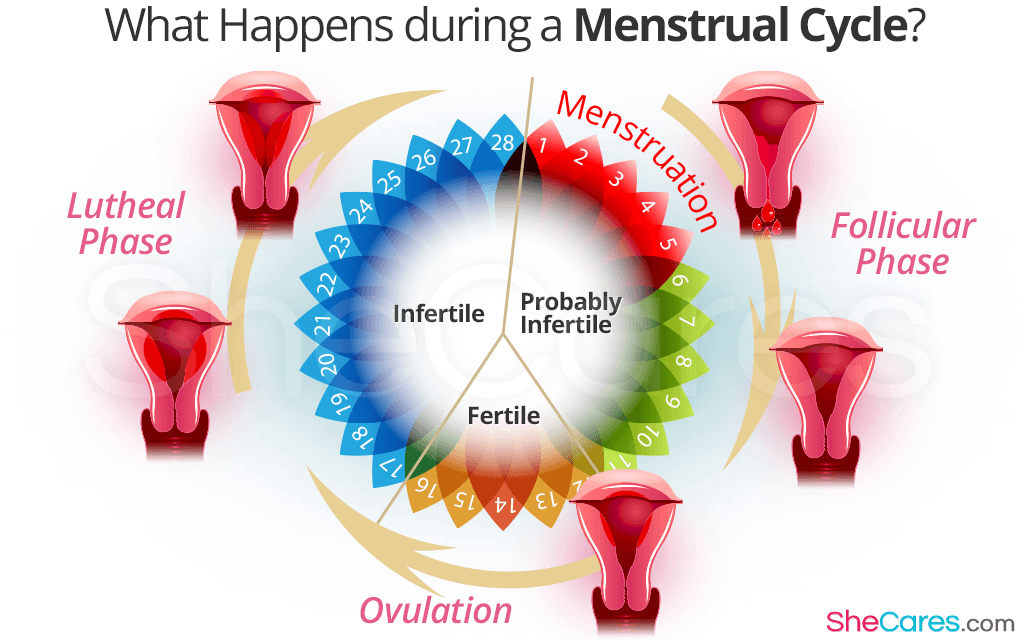Menstruation is a normal reproductive process. However, each woman may experience different body changes. The menstrual cycle is complex and controlled by numerous different glands, which produce hormones associated with menstruation. During the menstrual cycle, estrogen and progesterone levels rise, and throughout the process, each gland and hormone is affected by the activity of the others.
Keep reading to find out about each phase of the menstrual cycle and how each works.
Menstruation
Menstruation is the physical process that announces the beginning of the reproductive stage. It is the elimination of the thickened lining of the uterus – i.e. the endometrium – through the vagina. Bleeding will last between three to five days. However, some women may experience menstruation for seven days.
Sanitary pads or tampons are used to absorb the menstrual flow. Both pads and tampons need to be changed regularly (at least every four hours) to prevent irritation. During menstruation, women may experience other bodily changes, such as anxiety, sugar cravings, and mood swings.
Follicular Phase
The follicular phase starts on the first day of menstruation and ends with ovulation. The pituitary gland releases follicle stimulating hormone (FSH), a hormone that stimulates the body to produce follicles. The quantity will depend on each woman's body. Usually, one follicle will mature into an egg.
Ovulation
Ovulation is the release of a mature egg from the ovary that travels into the fallopian tube. This occurs at about day 14 of an average 28-day cycle. The hypothalamus recognizes the rising levels of estrogen and releases a chemical called gonadotropin-releasing hormone (GnRH), which makes the pituitary produce luteinizing hormone (LH).
After two days, ovulation is affected by LH. The mature follicle releases the ovum into the end of the fallopian tube. The egg will survive around 24 hours if fecundation does not occur.
Luteal Phase
For the next two weeks, the follicle transforms into a structure known as the corpus luteum. The corpus luteum releases estrogen and progesterone hormones, which maintain the endometrium for a fertilized egg.
If pregnancy doesn't occur, the corpus luteum dies around day 22 of a 28-day cycle. Progesterone levels decrease, which results in the fall of the lining of the uterus, and the cycle repeats.
The menstrual cycle is complex and controlled by many different glands and hormones, resulting in body changes. Women should know that if their periods last more than seven days, and they suffer from cramps, spotting, or pelvic pain, they should see a doctor.
